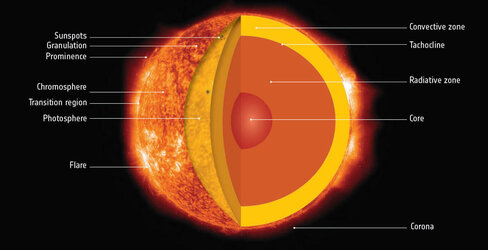Accept all cookies Accept only essential cookies See our Cookie Notice

About ESA
The European Space Agency (ESA) is Europe’s gateway to space. Its mission is to shape the development of Europe’s space capability and ensure that investment in space continues to deliver benefits to the citizens of Europe and the world.
Highlights
ESA - United space in Europe
This is ESA ESA facts Member States & Cooperating States Funding Director General Top management For Member State Delegations European vision European Space Policy ESA & EU Space Councils Responsibility & Sustainability Annual Report Calendar of meetings Corporate newsEstablishments & sites
ESA Headquarters ESA ESTEC ESA ESOC ESA ESRIN ESA EAC ESA ESAC Europe's Spaceport ESA ESEC ESA ECSAT Brussels Office Washington OfficeWorking with ESA
Business with ESA ESA Commercialisation Gateway Law at ESA Careers Cyber resilience at ESA IT at ESA Newsroom Partnerships Merchandising Licence Education Open Space Innovation Platform Integrity and Reporting Administrative Tribunal Health and SafetyMore about ESA
History ESA Historical Archives Exhibitions Publications Art & Culture ESA Merchandise Kids Diversity ESA Brand Centre ESA ChampionsLatest
Space in Member States
Find out more about space activities in our 23 Member States, and understand how ESA works together with their national agencies, institutions and organisations.
Science & Exploration
Exploring our Solar System and unlocking the secrets of the Universe
Go to topicAstronauts
Missions
Juice Euclid Webb Solar Orbiter BepiColombo Gaia ExoMars Cheops Exoplanet missions More missionsActivities
International Space Station Orion service module Gateway Concordia Caves & Pangaea BenefitsLatest
Space Safety
Protecting life and infrastructure on Earth and in orbit
Go to topicAsteroids
Asteroids and Planetary Defence Asteroid danger explained Flyeye telescope: asteroid detection Hera mission: asteroid deflection Near-Earth Object Coordination CentreSpace junk
About space debris Space debris by the numbers Space Environment Report In space refuelling, refurbishing and removingSafety from space
Clean Space ecodesign Zero Debris Technologies Space for Earth Supporting Sustainable DevelopmentLatest
Applications
Using space to benefit citizens and meet future challenges on Earth
Go to topicObserving the Earth
Observing the Earth Future EO Copernicus Meteorology Space for our climate Satellite missionsCommercialisation
ESA Commercialisation Gateway Open Space Innovation Platform Business Incubation ESA Space SolutionsLatest
Enabling & Support
Making space accessible and developing the technologies for the future
Go to topicBuilding missions
Space Engineering and Technology Test centre Laboratories Concurrent Design Facility Preparing for the future Shaping the Future Discovery and Preparation Advanced Concepts TeamSpace transportation
Space Transportation Ariane Vega Space Rider Future space transportation Boost! Europe's Spaceport Launches from Europe's Spaceport from 2012Latest

The anatomy of our Sun
Thank you for liking
You have already liked this page, you can only like it once!
Just as seismology reveals Earth’s interior by studying seismic waves from earthquakes, solar physicists use ‘helioseismology’ to probe the solar interior by studying the frequency and oscillations of sound waves reverberating through it.
Left cutaway: The Sun’s interior explored with sound waves by SOHO. Red depicts layers where sound travels faster than predicted by theory, implying that the temperature is higher than expected, while blue indicates slower speeds and lower temperatures. The prominent red layer marks the transition between the turbulent outer convection zone and the more stable inner radiative zone.
At the boundary, SOHO found that the speed of the rotating gas changes abruptly. The measurements indicated that, near the equator, the outer layers rotate faster than the inner layers, while at mid-latitudes and near the poles the situation is reversed. This is depicted in the right cutaway, where red depicts fast rotation and blue slower rotation.
Outer layers: Visible light images show sunspots, cool dark features in the photosphere, which lies below the chromosphere. Flares, resulting from the release of a buildup of magnetic energy, and coronal mass ejections (CMEs, giant clouds of electrically charged atomic particles launched into space) often occur in magnetically active regions around sunspot groups.
Coronal holes are darker, cooler and less dense areas of the Sun’s corona – its outer atmosphere – where the Sun’s magnetic field reaches into space, allowing hot gas (plasma) to escape. The high-speed solar wind originates from coronal holes.
-
CREDIT
Credits: SOHO (ESA & NASA) -
LICENCE
ESA Standard Licence

Soho charts Sun's temperature variations

Interior del Sol

Solar interior

Anatomy of the Sun















 Germany
Germany
 Austria
Austria
 Belgium
Belgium
 Denmark
Denmark
 Spain
Spain
 Estonia
Estonia
 Finland
Finland
 France
France
 Greece
Greece
 Hungary
Hungary
 Ireland
Ireland
 Italy
Italy
 Luxembourg
Luxembourg
 Norway
Norway
 The Netherlands
The Netherlands
 Poland
Poland
 Portugal
Portugal
 Czechia
Czechia
 Romania
Romania
 United Kingdom
United Kingdom
 Slovenia
Slovenia
 Sweden
Sweden
 Switzerland
Switzerland

























